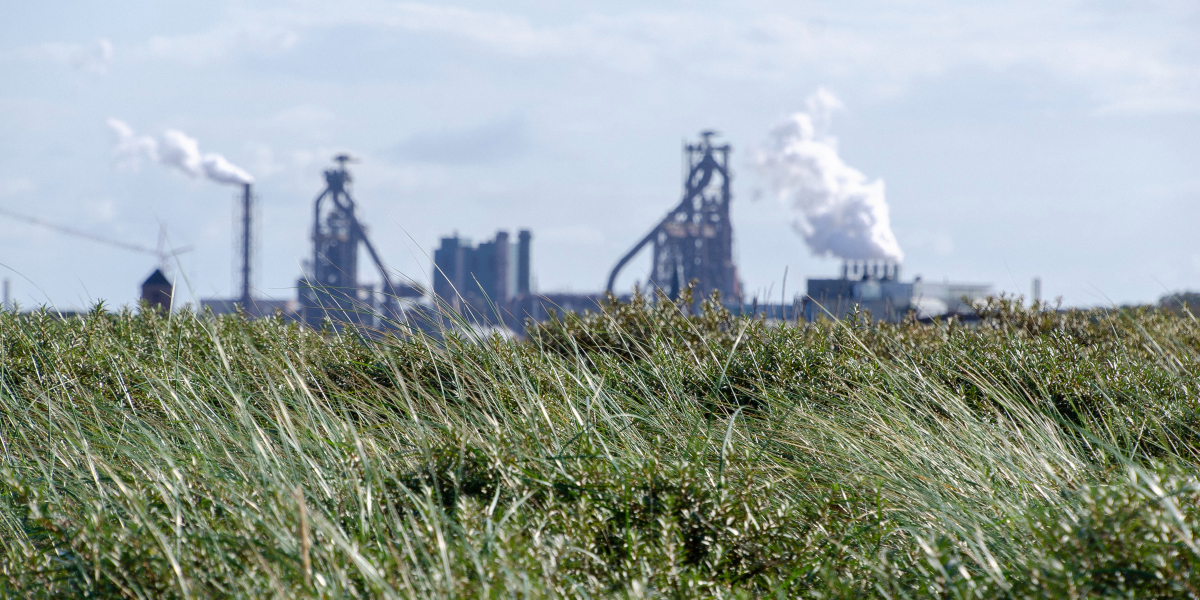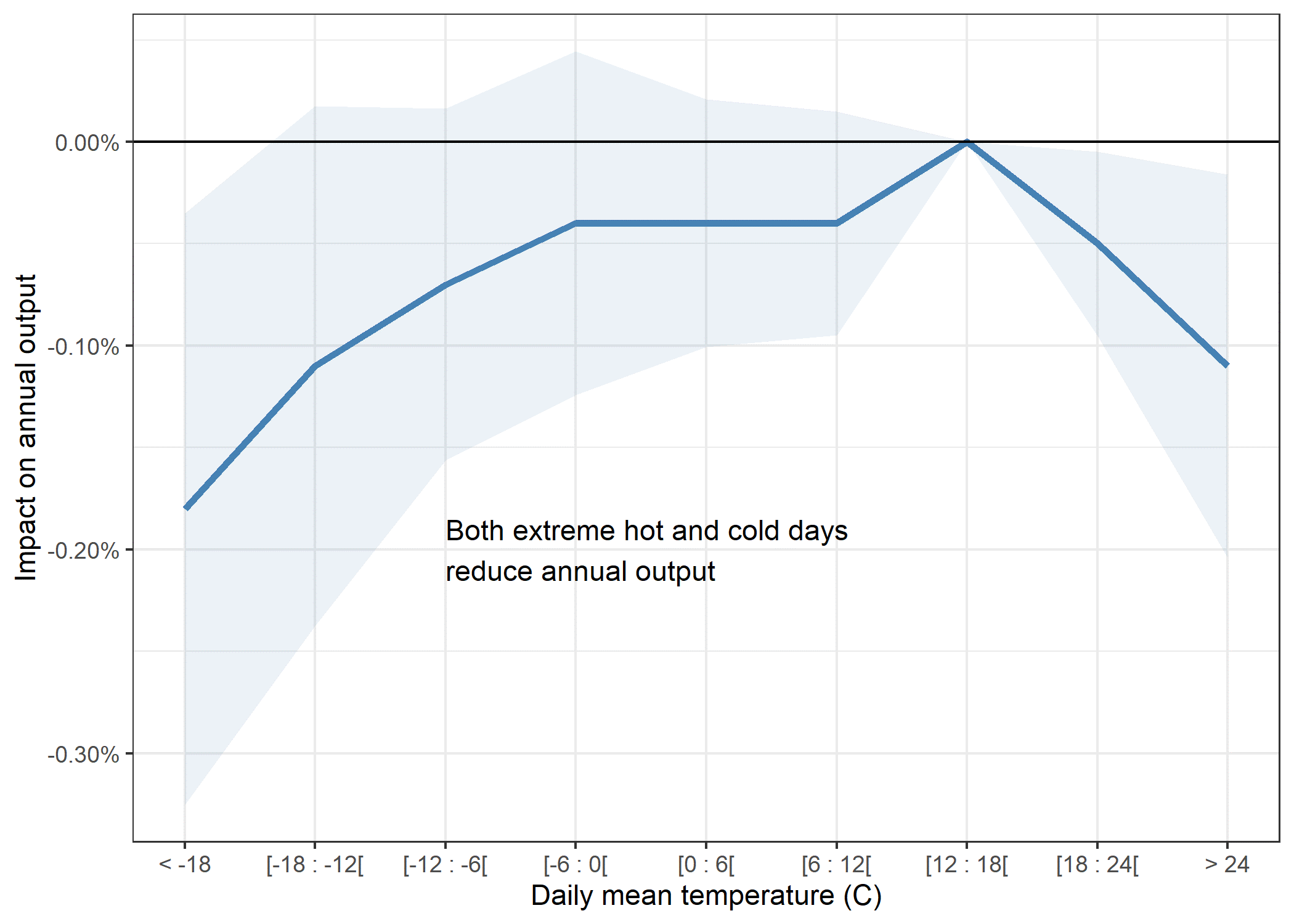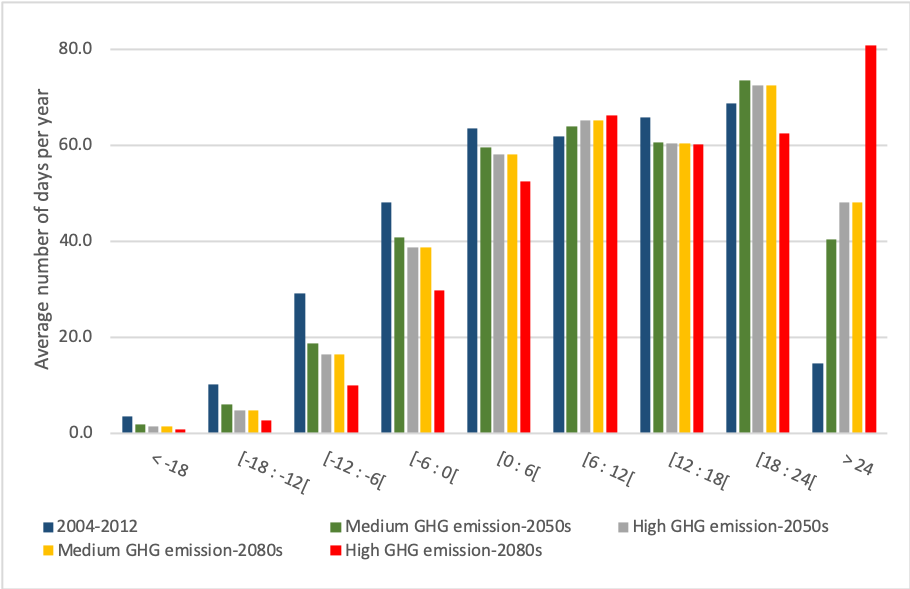
November 24, 2020
Guest post by Philippe Kabore and Nic Rivers
Many of the impacts of climate change are relatively easy to see. For example, the increasing severity of tropical storms, and the hot and dry conditions that lead to destructive wildfires have both been tied to climate change. Likewise, scientists are quite certain that climate change will bring higher sea levels with attendant damages to coastal property.
In contrast, it is more difficult to determine exactly how climate change will affect humans and the economy, since humans don’t respond mechanistically to external influences like climate change. Until recently, social scientists had only a vague idea about how climate change may affect economic outcomes, and many considered that most of the economy in developed countries would be insulated from any impacts of climatic change.
However, in the last decade, there have been significant methodological advances in understanding how climate is likely to impact people and the economy in which they work. This new research typically uses large data sets, with repeated observations of the same individual, city, country, or firm over time. By observing the performance of each individual in warm vs. cool periods that are otherwise similar, inferences are made about the impact of climate on individual outcomes. Studies such as this have revealed that climate change is likely to impact crime, mortality, agricultural output, energy demand, and many other socio-economic outcomes.
In a new working paper, we use this approach to estimate the potential impact of climate change on the Canadian economy. We use longitudinal data, which follows over 53,000 manufacturing plants from all over Canada during the period 2004-2012. Over the course of that time, each plant is exposed to all different types of weather. By comparing the productivity of a plant when it is exposed to more extreme weather -- say a heat wave -- with less extreme weather, we are able to infer how plant performance is affected by weather. We then use this inference to predict how plant performance may change in the future as the weather patterns shift as a result of climate change.
The figure below illustrates the results from the first step of this analysis. It shows that the output from manufacturing plants in Canada falls when they experience extreme weather. Both extreme cold days (when the 24-h daily mean temperature is below -18°C ) and extreme hot days (when the 24-h daily mean temperature is above 24°C ) cause the output of manufacturing plants to fall. In short, extreme weather impacts the economy, even in a developed country like Canada, and even for manufacturing activities, which take place mostly indoors.

Our empirical estimates suggest that extreme weather reduces manufacturing output. Using these empirical estimates, we determine that current extreme weather in Canada reduces manufacturing output of a typical plant by about 2.2% per year, with both extreme cold and extreme heat contributing roughly equally.
Future climate changes will alter the distribution of extreme weather, as shown in the figure below. Currently, days that we define as extremely cold (daily average below -18°C ) and extremely hot (daily average above 24°C) are both rare (they’re extremes, after all!). The typical manufacturing plant in Canada experiences just 4 extreme cold days and 14 extreme hot days in a year. However, changes in the climate will impact these extreme weather days. For example, under a high emissions scenario, by the end of the century a typical plant in Canada would experience just one extreme cold day, but over 80 extreme hot days each year. Our empirical estimates suggest that in the absence of additional adaptation, this would be economically costly, with output losses from extreme temperature increasing to over 7% per year for an average manufacturing plant.

These results are one of the first estimates of the potential impact of climate change on the broader Canadian economy. They are consistent with estimates from other regions of the world, and they suggest that unabated climate change is likely to pose threats to our economy as well as to other aspects of the natural environment and our way of life. These results suggest that reducing greenhouse gas emissions will not only provide an environmental benefit, but will also directly benefit the economy.
This blog is based on a recent Smart Prosperity Clean Economy Working Paper titled “Manufacturing Output and Extreme Temperature: Evidence from Canada” by Philippe Kabore and Nicholas Rivers.